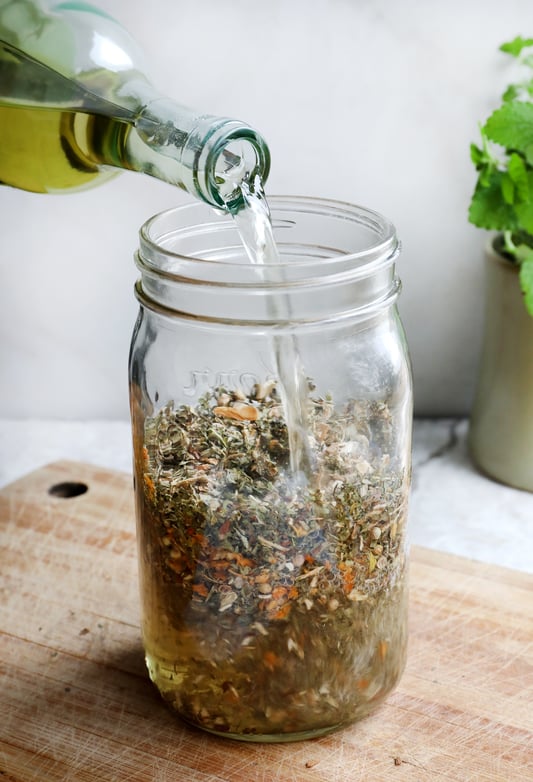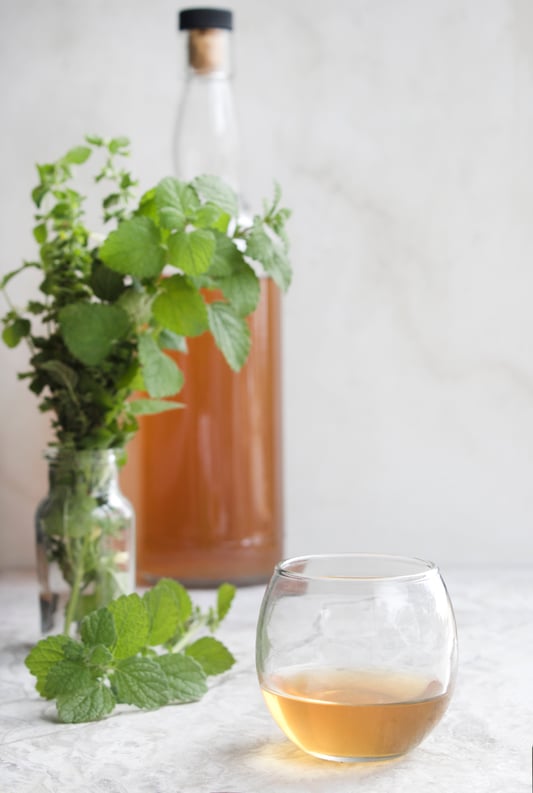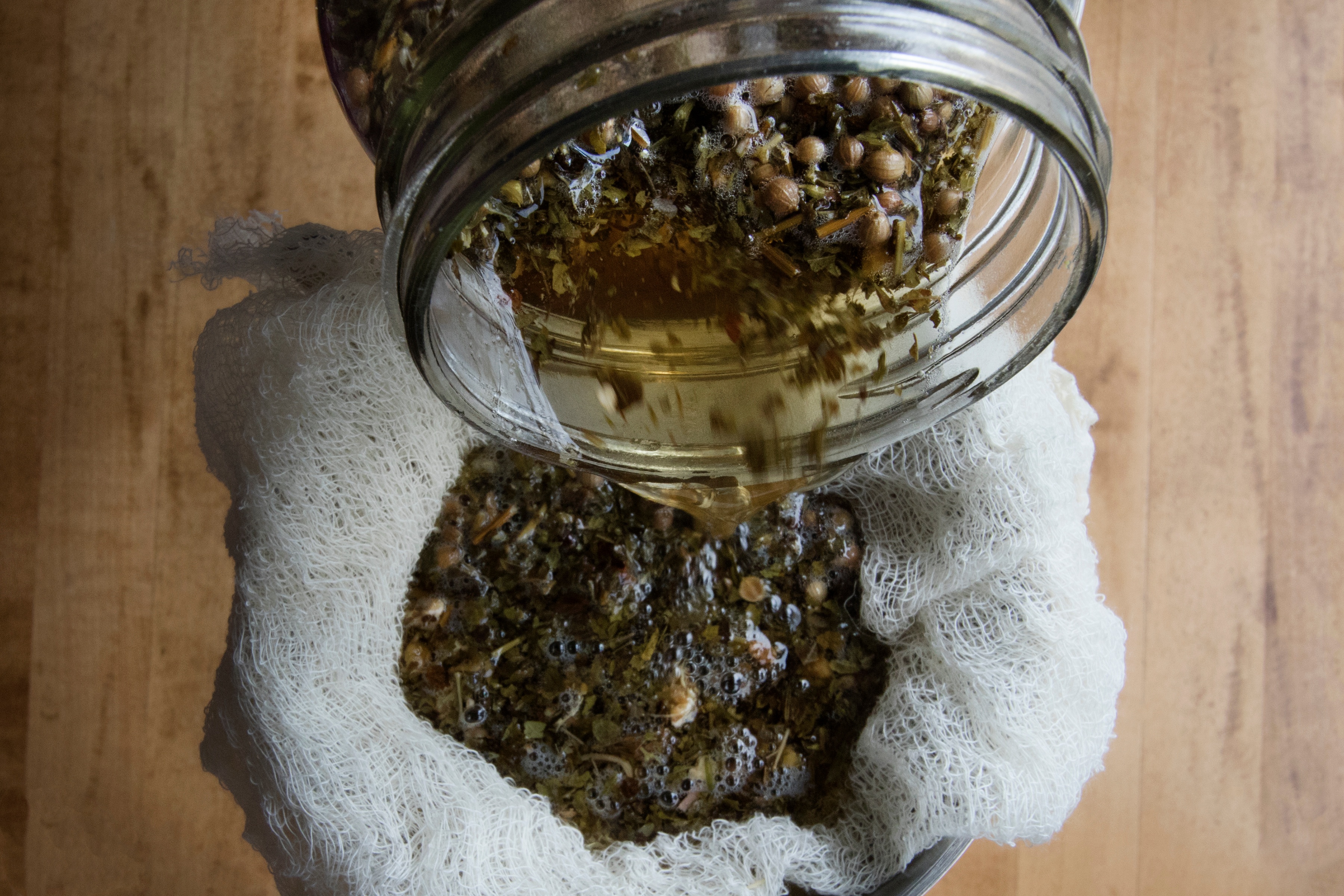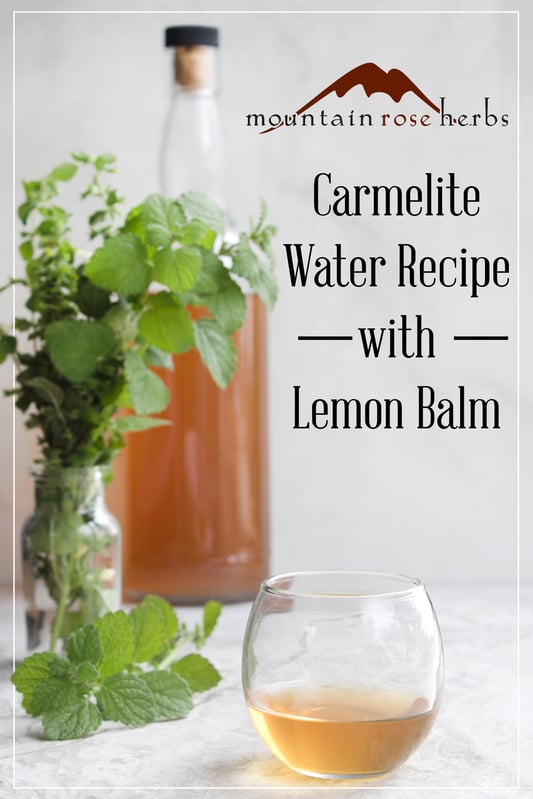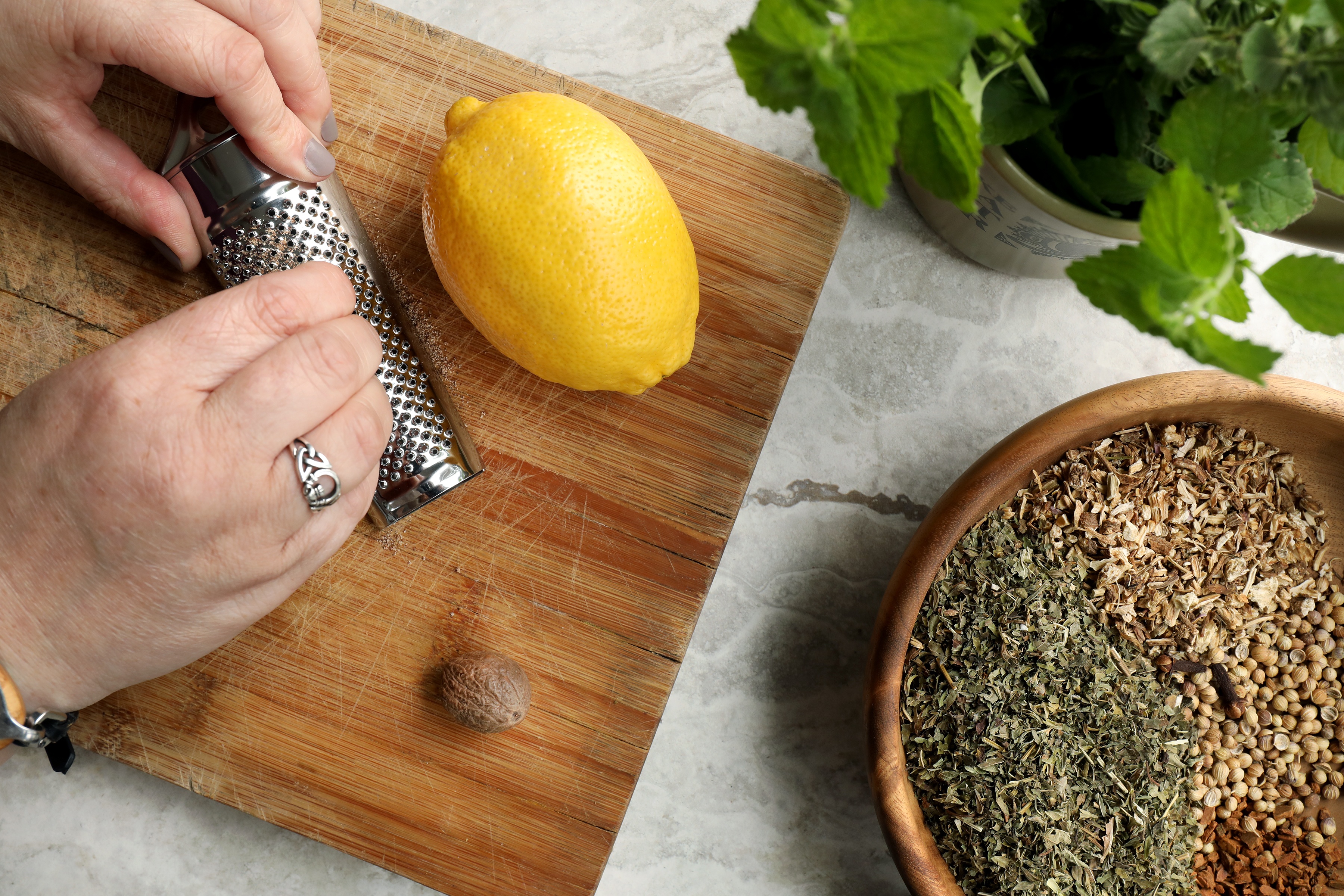
In days long ago, herbal potions were full of mystery and intrigue! In medieval France, many abbeys had their own unique recipes for distilled tonics. These blends were formulated with various herbs and spices and were a closely guarded secret within the abbey.
The liqueur known as Chartreuse is one famous example, a formulation reportedly made from distilled alcohol that has been aged with over 130 different plants.
About Carmelite Water
Carmelite water, otherwise known as Eau de Mélisse, is another traditional herbal spirit that has stood the test of time. The characteristic feature of Carmelite water is the fresh and citrusy herb, lemon balm. It was commonly proclaimed to be a panacea formulation and used in response to many different health complaints. The original formula for Carmelite water may be well over 600 years old! The first recorded recipe is from 1379 and included herbs like lemon balm (Melissa officinalis) and angelica (Angelica archangelica).
It’s fascinating to think of those herbal potions being made hundreds of years ago. Closing my eyes, I envision an old apothecary filled with dried herbs and potions, and someone stirring a fragrant pot, creating a recipe that would be passed down for generations.
One company in France has been making their own version of Carmelite water since 1611. It’s called Eau de Mélisse des Carmes Boyer. Their recipe is, of course, a secret, but their website says they use 14 herbs (including lemon balm) and nine spices in their distilled alcohol. This blend is mainly sold in pharmacies.
A Carmelite water recipe published in 1829 in Mackenzie’s 5,000 Receipts ("receipts" is an old spelling of "recipes") reads,
“Eau de Mélisse de Carmes: Take of dried balm leaves, 4 oz., dried lemon-peel, 2 do.; nutmegs and coriander seeds, each, 1 oz.; cloves, cinnamon, and dried angelica roots, each, 4 dr.; spirit of wine, 2 lbs.; brandy, 2 ditto. Steep and distil in balneum mariae, re-distil, and keep for some time in a cold cellar.”
Making Carmelite Water at Home
I first made my own version of Carmelite water about seven years ago. I was exploring uses for lemon balm at the time and came across many references to this enchanting blend. I was immediately intrigued and was inspired to make up my own similar aromatic cordial of herbs and spices. Instead of distilling the alcohol, I simply made a wine infusion. The following is an updated version.
I like sipping this fragrant infused spirit chilled on a hot summer’s evening. As I drink, I wonder if my own French ancestors drank “Eau de Mélisse” or something similar. While we know bits and pieces of this formula’s history, there must be a lot of forgotten stories hidden within it. Dreaming of the mystery of herbal potions while sipping this wine is encouraged!
Carmelite Water Recipe with Lemon Balm
Makes about 3 cups.
Ingredients
- 1/2 cup fresh lemon balm leaves or 1/4 cup dried organic lemon balm
- 1/4 cup dried organic angelica root
- 1 Tbsp. dried organic coriander seed
- 1 Tbsp. fresh lemon zest (about 1 small organic lemon)
- 1 tsp. fair trade, organic (cassia) cinnamon chips
- 2 fair trade, organic whole cloves
- 1/8 tsp. freshly grated fair trade, organic nutmeg
- 1 bottle organic dry white wine
Directions
- Combine all the herbs and spices into a glass quart jar.
- Pour the wine into the jar.
- Stir well.
- Cover with a lid.
- Steep for 4 to 6 hours.
- Strain through several layers of cheesecloth or a coffee filter and compost the herbs.
- Place the infused wine in an airtight container and chill for several hours.
- Enjoy within 3 to 5 days.
If you aren’t a wine drinker but you’d like to try this new take on a historical herbal formulation, you can also make this blend into a yummy cold-infused tea. To do this, simply substitute water for the wine. Follow the same instructions. The resulting infusion will have a strong taste that can be tempered with equal parts water. Drink within 24 to 36 hours.
Have you ever created your own version of a historical formulation? Do you wonder what herbal potions your ancestors may have treasured? I’d love to hear your thoughts in the comments below.
Find more inspiring and practical recipes at www.HerbsWithRosalee.com and www.LearningHerbs.com
Looking for more herbal-inspired spirits?
Make Your Own Herb-Infused Wine!

